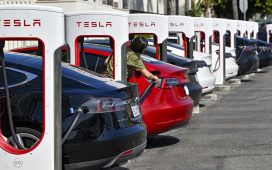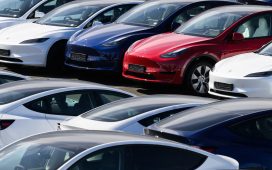Maskot | Maskot | Getty Images
If you’re thinking about leasing a car, be aware that you may not save as much money as you anticipate by going that route.
With inventory limited amid ongoing supply-chain snags — meaning fewer choices and elevated prices due to demand outstripping supply — discounts on new vehicles are limited whether you buy or lease. The average purchase incentive among the deals offered is an estimated $894, down from more than $2,000 a year ago, according to a joint forecast from J.D. Power and LMC Automotive.
“One of the factors contributing to the reduction in incentive spending is the absence of discounts on vehicles that are leased,” said Thomas King, president of the data and analytics division at J.D. Power, in the report.
More from Personal Finance:
Millennials’ average net worth more than doubled in pandemic
Gen Z is saving more for retirement than older generations
Here’s how social media ‘FOMO’ drives bad spending habits
July marked first time the average discount has fallen below $900 and the third consecutive month for it trending below $1,000, the research notes. Separately, the average monthly payment for new leases rose in July to $594 from $575 in June, according to data from car comparison site Edmunds.com.
“Dealers aren’t getting the incentive programs from automakers that they used to … or even if there are programs, the dealerships aren’t participating,” said Ivan Drury, senior manager of insights for Edmunds.
“In years past, they did this left and right,” he said.
Inventory may not include cars eligible for discounts
Drury also said the limited manufacturer discounts being offered apply to very specific trim levels among certain models. So, even then, it doesn’t mean you’ll easily find the exact car that’s eligible for an incentive.
“If the dealership isn’t ordering those vehicles, how are you going to get that special?” Drury said.
The share of new-car transactions that involve leases fell in July to 18%, a level not seen since February 2009, according to Edmunds. A year ago, it was 27.2%.
‘You’ll just be paying more to lease right now’
Despite the dearth of incentives, if you are a serial leaser — for whatever reason — then it may still make sense for you, Drury said. Just be prepared to see few deals and monthly payments that may be much higher than they were three years ago. And, there may be less of a savings in those payments over traditional financing, depending on the car.
“Some people don’t like having a car that’s 4 or 5 years old,” he said. “You’ll just be paying more to lease right now.”
Meanwhile, if it’s your first time considering a lease, be aware that the cost of financing is expressed differently than it is with loans.
Leasing companies use a number called the “money factor.” The dealership should be able to convert that amount into an interest rate so you know what you’re paying.
By way of comparison: For new cars that are financed using a five-year auto loan, the average interest rate is about 4.84%, according to Bankrate. That figure could tick upward as the Federal Reserve continues adjusting rates upward in an effort to battle inflation.
Explore your lease-end options
Here’s why: With limited inventory among new vehicles, demand has continued spilling into the used-car market. For 1- to 3-year-old cars, prices are an average $13,145 above where they’d be if typical depreciation expectations were at play, according to CoPilot, a car shopping app. Leases typically are for about three years and come with mileage restrictions.
This means it may be worth looking into buying out the lease instead of turning in the car, for instance. If the buyout price (which is generally the residual value) in your agreement is lower than your vehicle’s current value, you’d be paying less for the car than if you were to purchase it from a dealership’s lot.








